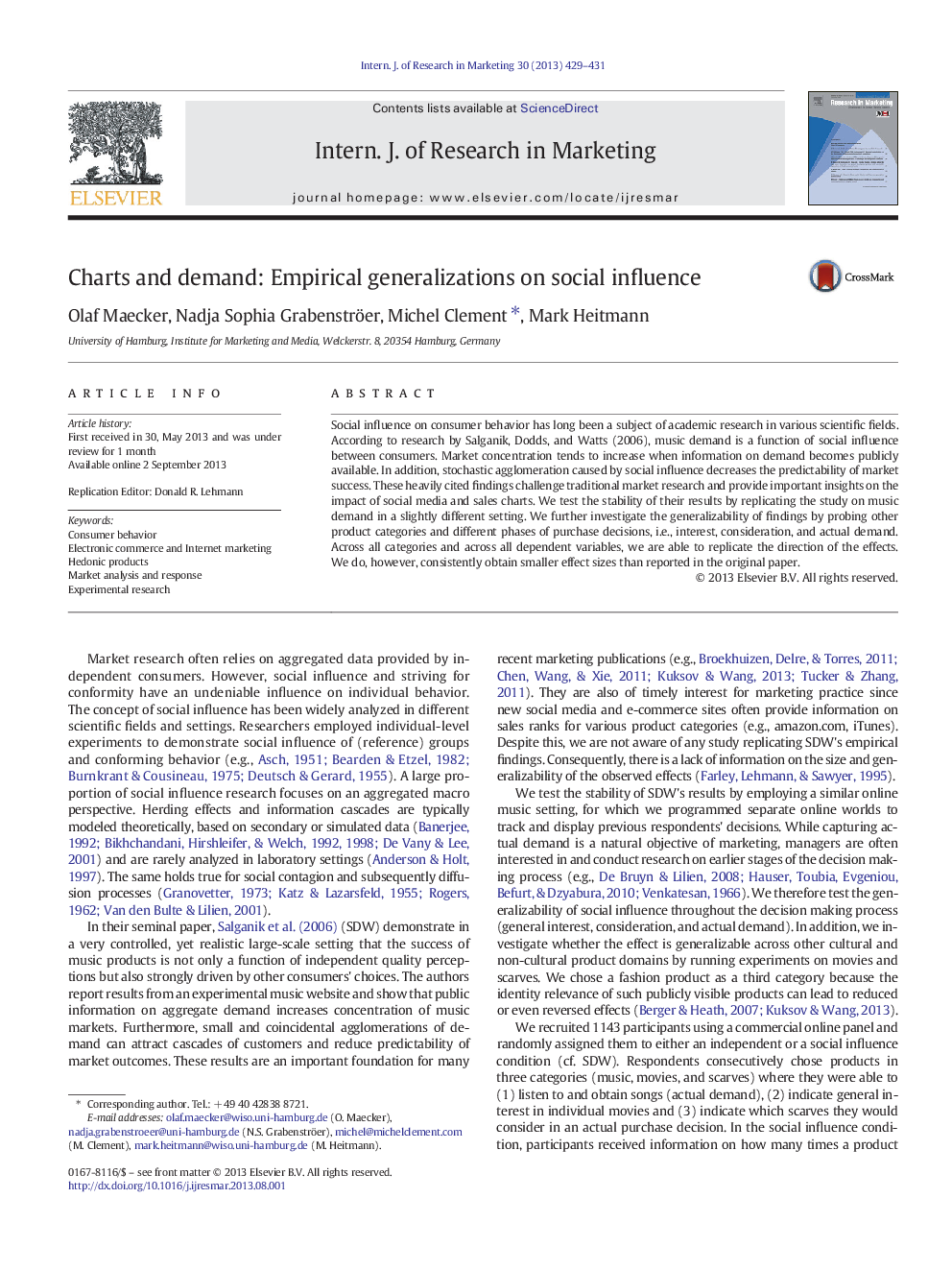Social influence on consumer behavior has long been a subject of academic research in various scientific fields. According to research by Salganik, Dodds, and Watts (2006), music demand is a function of social influence between consumers. Market concentration tends to increase when information on demand becomes publicly available. In addition, stochastic agglomeration caused by social influence decreases the predictability of market success. These heavily cited findings challenge traditional market research and provide important insights on the impact of social media and sales charts. We test the stability of their results by replicating the study on music demand in a slightly different setting. We further investigate the generalizability of findings by probing other product categories and different phases of purchase decisions, i.e., interest, consideration, and actual demand. Across all categories and across all dependent variables, we are able to replicate the direction of the effects. We do, however, consistently obtain smaller effect sizes than reported in the original paper.
Market research often relies on aggregated data provided by independent consumers. However, social influence and striving for conformity have an undeniable influence on individual behavior. The concept of social influence has been widely analyzed in different scientific fields and settings. Researchers employed individual-level experiments to demonstrate social influence of (reference) groups and conforming behavior (e.g., Asch, 1951, Bearden and Etzel, 1982, Burnkrant and Cousineau, 1975 and Deutsch and Gerard, 1955). A large proportion of social influence research focuses on an aggregated macro perspective. Herding effects and information cascades are typically modeled theoretically, based on secondary or simulated data (Banerjee, 1992, Bikhchandani et al., 1992, Bikhchandani et al., 1998 and De Vany and Lee, 2001) and are rarely analyzed in laboratory settings (Anderson & Holt, 1997). The same holds true for social contagion and subsequently diffusion processes (Granovetter, 1973, Katz and Lazarsfeld, 1955, Rogers, 1962 and Van den Bulte and Lilien, 2001).
In their seminal paper, Salganik et al. (2006) (SDW) demonstrate in a very controlled, yet realistic large-scale setting that the success of music products is not only a function of independent quality perceptions but also strongly driven by other consumers' choices. The authors report results from an experimental music website and show that public information on aggregate demand increases concentration of music markets. Furthermore, small and coincidental agglomerations of demand can attract cascades of customers and reduce predictability of market outcomes. These results are an important foundation for many recent marketing publications (e.g., Broekhuizen et al., 2011, Chen et al., 2011, Kuksov and Wang, 2013 and Tucker and Zhang, 2011). They are also of timely interest for marketing practice since new social media and e-commerce sites often provide information on sales ranks for various product categories (e.g., amazon.com, iTunes). Despite this, we are not aware of any study replicating SDW's empirical findings. Consequently, there is a lack of information on the size and generalizability of the observed effects (Farley, Lehmann, & Sawyer, 1995).
We test the stability of SDW's results by employing a similar online music setting, for which we programmed separate online worlds to track and display previous respondents'


